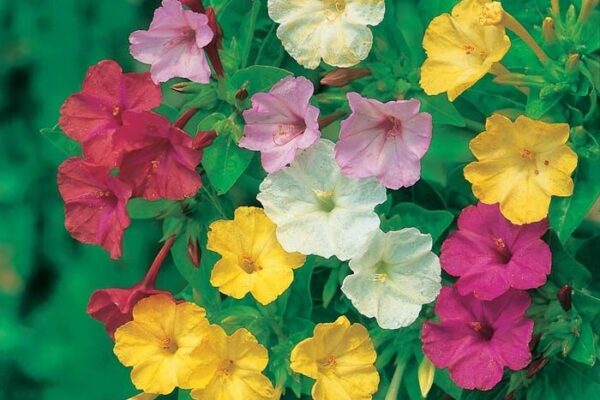Flowers that Attract Pollinators in Garden
One out of every three bites of your food depends on pollinators. So rolling out the welcome mat and ringing the dinner bell for pollinators by planting varieties they’ll love is smart. Watching pollinators like honeybees, butterflies, and hummingbirds at flowers is joy in life, and they are responsible for pollinating 75% of crops.
Whether you’re starting from scratch or playing catch up in an existing garden. We’ve got do-it-now advice and recommendations for what to plant to attract specific pollinators. Here are our top tips and favorite plants for attracting hummingbirds, butterflies, and bees. Then keeping them happy in your garden.
Butterfly, bird and bee favourites, Magnus Purple Coneflower, Kobold Gayfeather and other pollinators. Kobold Gayfeather is a particular favourite of swallowtail butterflies.
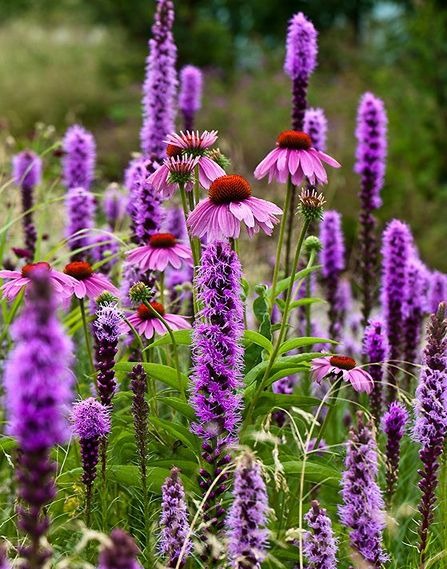
Top 10 Tips for attracting pollinators like Bees, Butterflies and Hummingbirds
- Determine which pollinator-friendly plants are suitable for your region.
- Plant plenty of them, with at least 3×3 feet area for each plant species.
- Composite flowers like coreopsis, sunflowers, asters, and yarrow are great for pollinators.
- Choose single flowers over double flowers, and bright, tubular flowers like honeysuckle, fuchsia, penstemon, agastache, and foxglove for attracting hummingbirds.
- Avoid using chemicals like insecticides and chemical fertilizers in the garden, as they can harm beneficial insects and pollinator populations.
- Use compost and mulch to build healthy soil that supports pollinators, birds, and beneficial insects.
- Plan the garden to have blooming flowers throughout the growing season.
- Provide shelter for pollinators by leaving some areas untrimmed and unmowed, and pile up grass cuttings in a sunny spot.
- Create a nesting habitat for ground-nesting bees by leaving some soil bare.
- Offer a bee watering station with a shallow bowl filled with rocks and water that’s cleaned often.
Flowers that Attract Bees
When creating a pollinator-friendly garden, it’s important to choose plants that produce flowers with ample nectar and pollen to attract pollinators including bees. By observing the bees as they visit your garden, you may notice small pockets of pollen on their legs, indicating that they’re gathering what they need. A good sign that you’ve chosen the right flowers is when you see bees with yellow “pollen pants”
To ensure a steady supply of pollen and nectar for pollinators from early spring to fall, consider planting a mix of flowers that bloom at different times throughout the growing season. Look for plants that offer a variety of flower shapes and sizes to attract different bee species, as they come in various sizes and shapes. Smaller bees are often drawn to clusters of small flowers, while larger bees, such as bumblebees, tend to prefer larger flowers that can support their weight.
Five bee-friendly plants
Fiesta Coneflower
Light: Full sun
Watering: Water when top 2 inches of soil is dry
Blooms: Late spring through fall
Coneflowers from the Evolution series, including the vibrant Fiesta variant are a magnet for pollinators such as bees, butterflies, and hummingbirds. Their bold and vivid colors are especially appealing to these creatures. With a compact and tidy growth habit, these coneflowers are ideal for enhancing the beauty of pots, beds, and borders. Up to 20″ tall, 18″ wide. Zones 4-9.

La Barbe Bleu Bluebeard
Light: Full Sun
Watering: Once established water occasionally
Blooms: Summer through early fall
The Caryopteris shrub is a popular choice among pollinators, attracting a buzzing crowd of friendly bees throughout the summer and well into fall. This exquisite and distinctive variety boasts shiny yellow foliage and striking deep blue flower spikes, all contained within a neat and compact growth habit. Up to 36″ tall, 30″ wide. Zones 5-9.
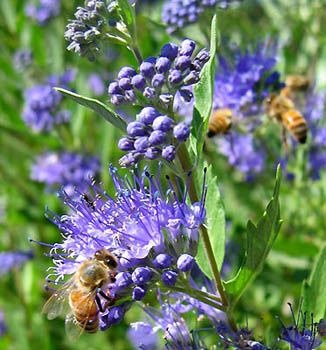
Nitty Gritty White Rose
Light: Full Sun
Watering: Water when top 3 inches of soil is dry
Blooms: Spring through fall
Abundant white blooms on these Monrovia exclusive groundcover roses provide a sweet nectar source that pollinators including bees find irresistible. These own-root roses are remarkably resilient and easy to care for, requiring minimal attention to look stunning. Up to 3′ tall, 4′ wide. Zones 4-9.
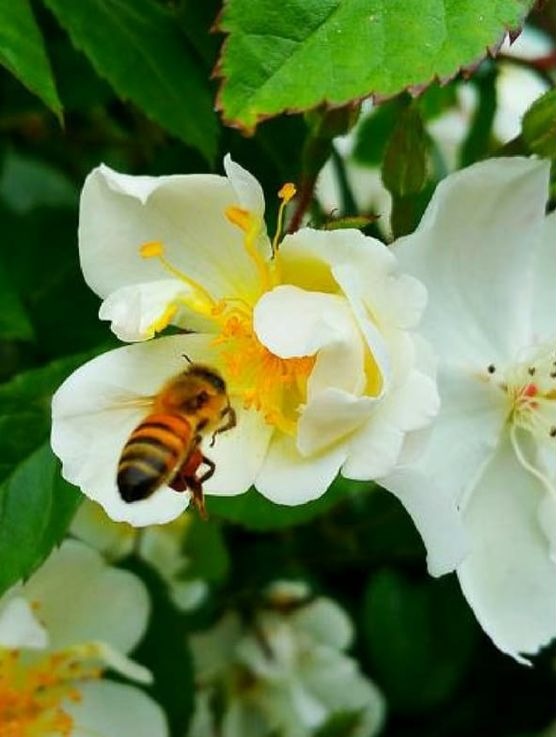
Gold Coreopsis
Light: Full sun
Watering: Allow soil to dry slightly before watering
Blooms: Late spring through summer
This Monrovia exclusive features striking, large blooms in a molten gold color with red centers that cover the feathery and mildew-resistant foliage. The plant is low-maintenance and well-behaved, and provides a lengthy period of vibrant color, as well as nectar for pollinators including butterflies and bees. Up to 24″ tall, 30″ wide. Zones 4-9.
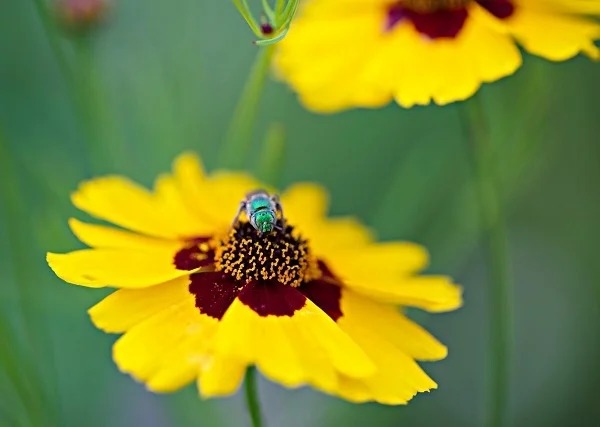
Rhododendron
Light: Partial Sun
Watering: Keep soil moist, but not soggy
Blooms: Late spring
This plant is a hardy evergreen shrub that is vigorous and able to withstand cold temperatures. It produces large clusters of rose-lilac-colored flowers that are friendly to pollinators. This plant is an excellent option for foundation plantings or as a standout accent specimen. Up to 8′ tall and wide. Zones 4-8.
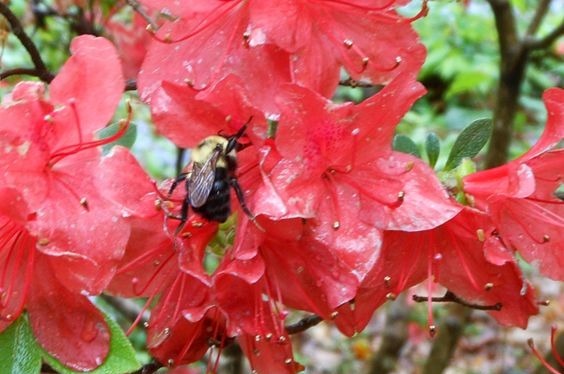
Flowers that Attract Butterflies
Flowers that are rich in nectar tend to attract not only bees but also butterflies, which are typically drawn to flowers that contain ample pollen. These types of flowers also tend to be suitable for other creatures such as hummingbirds and various species of birds. To create a hospitable environment for these creatures, it is best to plant flowers in abundance with vibrant hues. Additionally, planting a diverse array of flower shapes will attract a variety of butterfly species, each with its unique shape and size.
It is essential to research native milkweed plants and reserve some space to nurture these plants as they provide a crucial source of nourishment for monarchs and other native butterflies and pollinators in your local area.
Five Butterfly-Friendly Plants
Gay Butterflies Milkweed
Light: Full Sun
Watering: Once established, water occasionally
Blooms: Summer
While milkweed is widely recognized as the sole source of sustenance for monarch butterfly larvae, it is also an excellent source of nectar for various other species of butterflies and bees, making it a crucial plant for pollinators. Therefore, it is crucial to cultivate milkweed varieties indigenous to your locality to support monarch butterfly populations in your region.
An example of a native North American milkweed species is Gay Butterflies, whose fiery hues of red, orange, and yellow make for a striking display during the summer season. This low-maintenance and well-behaved plant can thrive in lean, unimproved soils, making it an ideal choice for naturalized areas, meadows, and borders. Up to 3′ tall, 2′ wide. Zones 4-11.
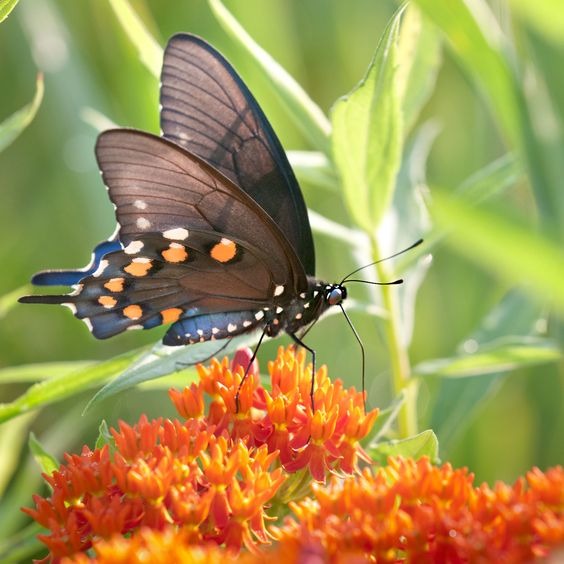
Thumbelina Leigh English Lavender
Light: Full Sun
Watering: Let soil go almost dry between watering
Blooms: Summer
This plant is highly fragrant and produces an abundance of violet-blue flowers in spikes that attract pollinators. Up to 18″ tall, 12″ wide. Zones 5-9.
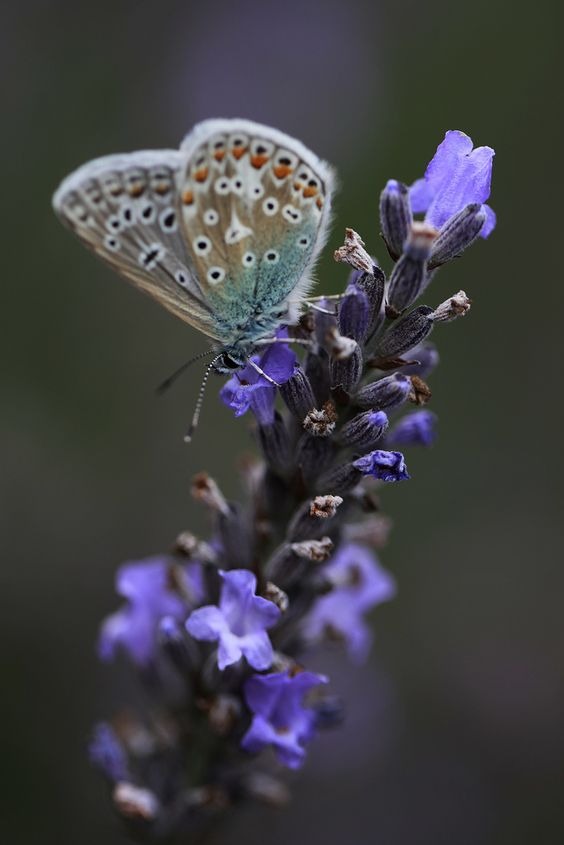
Black Knight Butterfly Bush
Light: Full sun, Partial sun
Watering: Water when top 3 inches of soil is dry
Blooms: Midsummer through fall
Butterflies and hummingbirds are drawn to the spectacular, dark violet-purple flowers that bloom midsummer through fall. These lightly fragrant spikes are also rich in nectar, making them a delight for these pollinators. Up to 8′ tall and 6′ wide. Zones 5-9.
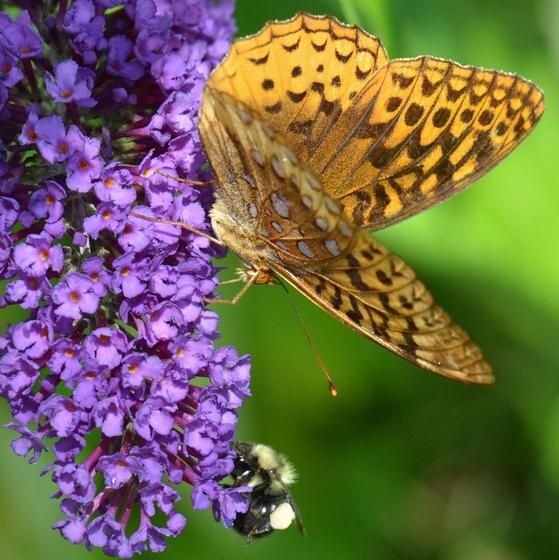
Lollipop Verbena
Light: Full sun, Partial sun
Watering: Water when top 3 inches of soil is dry
Blooms: Summer, fall
This dwarf selection of verbena is known to attract various creatures such as butterflies, bees, and hummingbirds. Its popularity among butterflies of all species makes it an essential addition to butterfly gardens in warmer zones. Up to 36″ tall and wide. Zones 7-11.
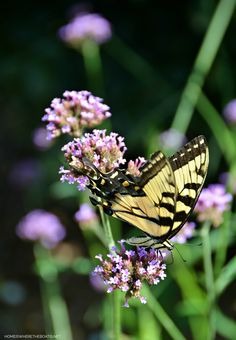
Creeping Phlox
Light: full Sun
Watering: Allow soil to dry slightly before watering
Blooms: Spring to summer
During the spring season, this plant produces an extensive display of dense and vivid crimson flowers, forming a striking carpet of color. Additionally, phlox is a favorite among butterflies, as they are attracted to the nectar that it provides. Up to 6″ tall, forming a dense mat up to 3′ wide. Zones 3-9.
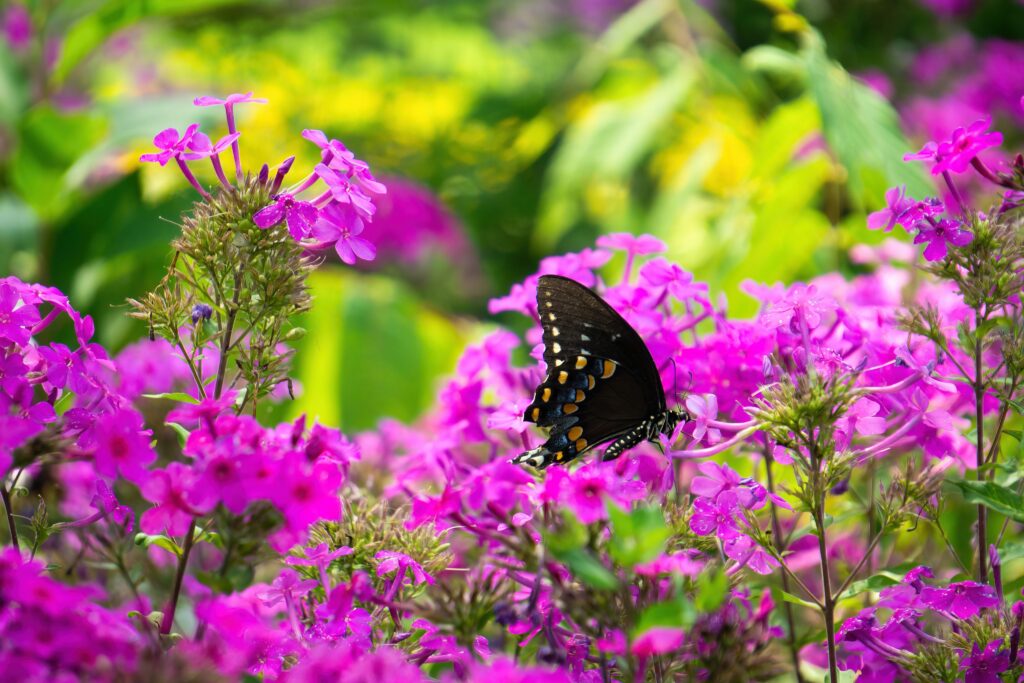
Flowers that Attract Hummingbirds
To ensure that hummingbirds are attracted and return to your garden, it is essential to select perennials with plenty of tubular flowers. These flowers should have bright colors such as pink, orange, red, and purple, as hummingbirds are particularly drawn to vibrant and “hot” hues. Tubular flowers are ideally suited for hummingbirds’ long, thin beaks and tongues to reach the flower’s rich nectar.
In addition, hummingbirds require a vast quantity of blooms as they visit thousands of flowers per day to acquire enough nutrition to maintain their high metabolism. Therefore, selecting plants with abundant blooms and planting a multitude of them is necessary to attract and retain these pollinators in your garden.
Five hummingbird-friendly plants
Kudos Coral Dwarf Agastache
Light: Full Sun
Watering: Allow soil to dry slightly before watering
Blooms: Spring to Summer
Hummingbirds are particularly drawn to the tall, striking spikes of tubular flowers present in all Agastache varieties. Kudos, in particular, stands out for its abundant blooms, compact growth habit, and enhanced performance. It is more robust, resistant to disease, and capable of tolerating cold, wet soils. including hummingbirds, bees, and butterflies. Up to 20″ tall, 16″ wide. Zones 5-10.
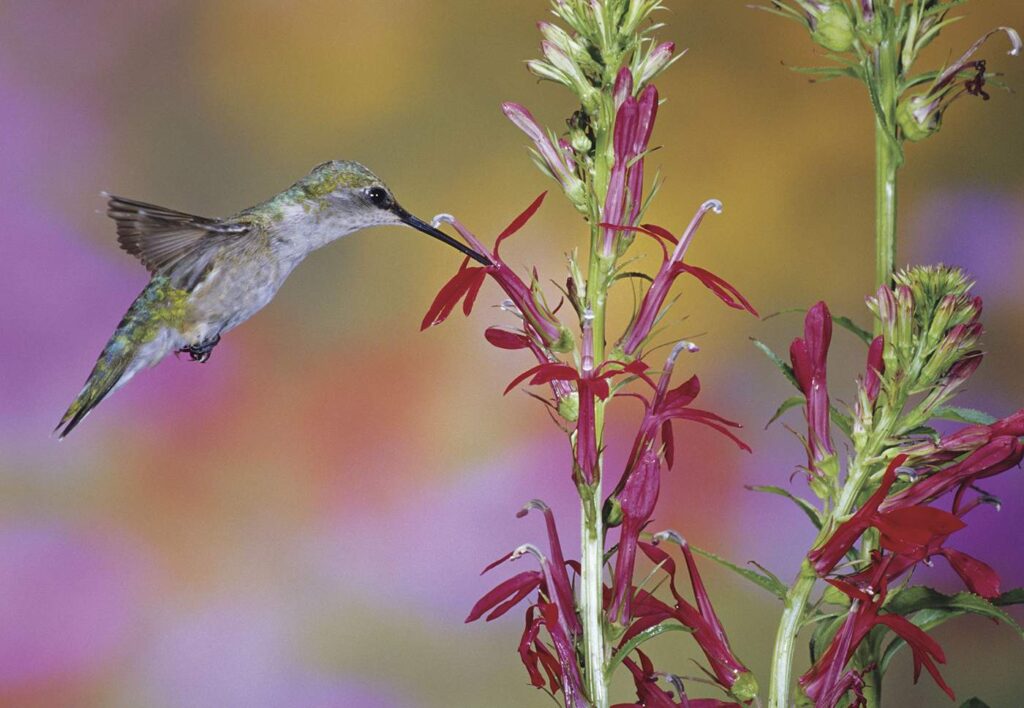
Balmy Lilac Bee Balm
Light: Full sun, Partial sun
Watering: Keep soil moist but not soggy
Blooms: Late spring to early summer
Hummingbirds, butterflies, and bees are all drawn to the copious, striking, and vibrant flowers of bee balm. This particular variety, which is small in size, boasts fragrant, dark-green leaves that are resistant to mildew. Up to 12″ tall, 10″ wide. Zones 4-9.
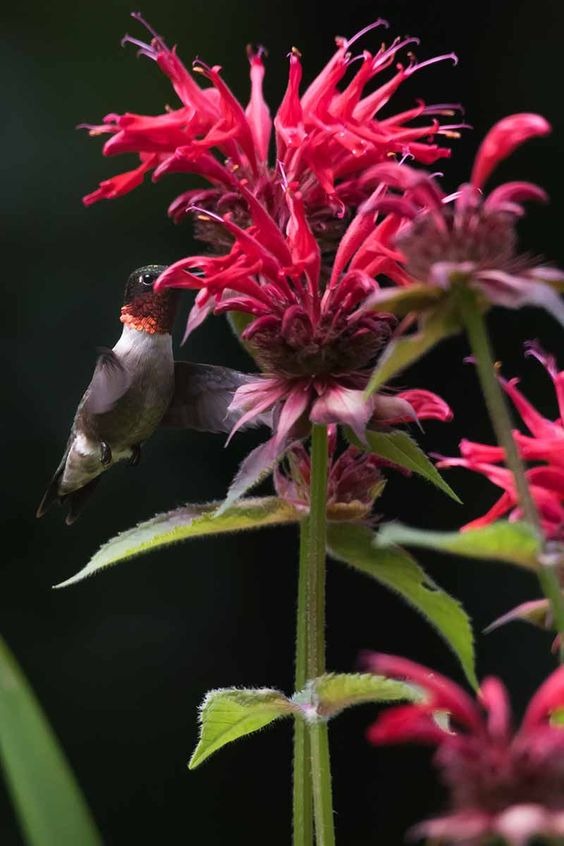
Goldflame Honeysuckle
Light: Full sun, Partial sun
Watering: Water when top 2 inches of soil is dry
Blooms: Spring through fall
Of all the various types of honeysuckles, hummingbirds have a fondness for all of them. However, we have a special appreciation for this specific honeysuckle due to its distinctively colored buds that range from purple to deep pink and its tubular flowers that are a brilliant shade of gold-yellow. These blooms can be seen throughout the duration of the summer season. Twining stems quickly reach 15′ long. Zones 4-9.
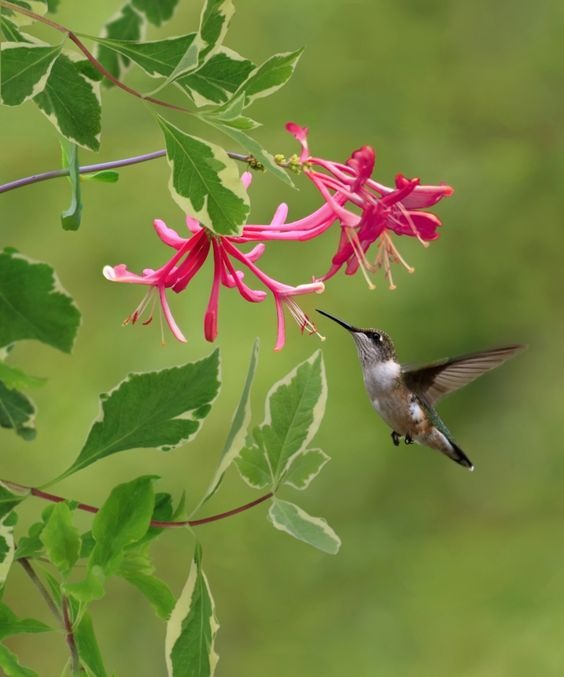
Poco Citron Hot Poker
Light: Full Sun
Watering: Allow soil to dry slightly before watering
Blooms: Summer into fall
The petite version of Red Hot Poker boasts flower spikes that are rich in nectar. These blooms begin as a lime green color and gradually transition to a bright lemon-yellow hue before ultimately maturing into a soft, buttery shade. Additionally, the grass-like foliage maintains a tidy appearance throughout the summer months. Up to 20″ tall, 14″ wide. Zones 6-9.
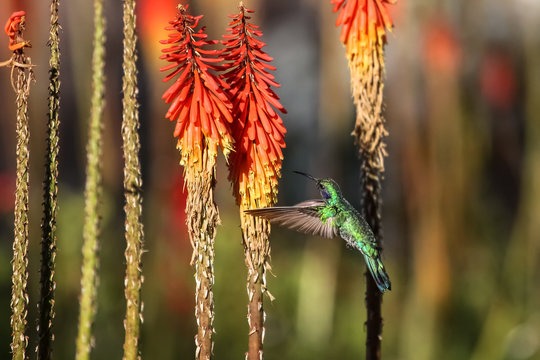
Coral Glow Texas Yucca
Light: Full Sun
Watering: Once established water during dry spells
Blooms: Early spring through fall
The copious 6-foot-tall flower spikes of this plant are adorned with trumpet-shaped blooms in a vivid coral-orange hue, serving as a beacon that entices hummingbirds. These flower spikes arise from clumps of slender, sword-shaped, gray-green foliage, emerging as early as spring and continuing through the autumn season. Up to 6′ tall, 4′ wide. Zones 5-9.



